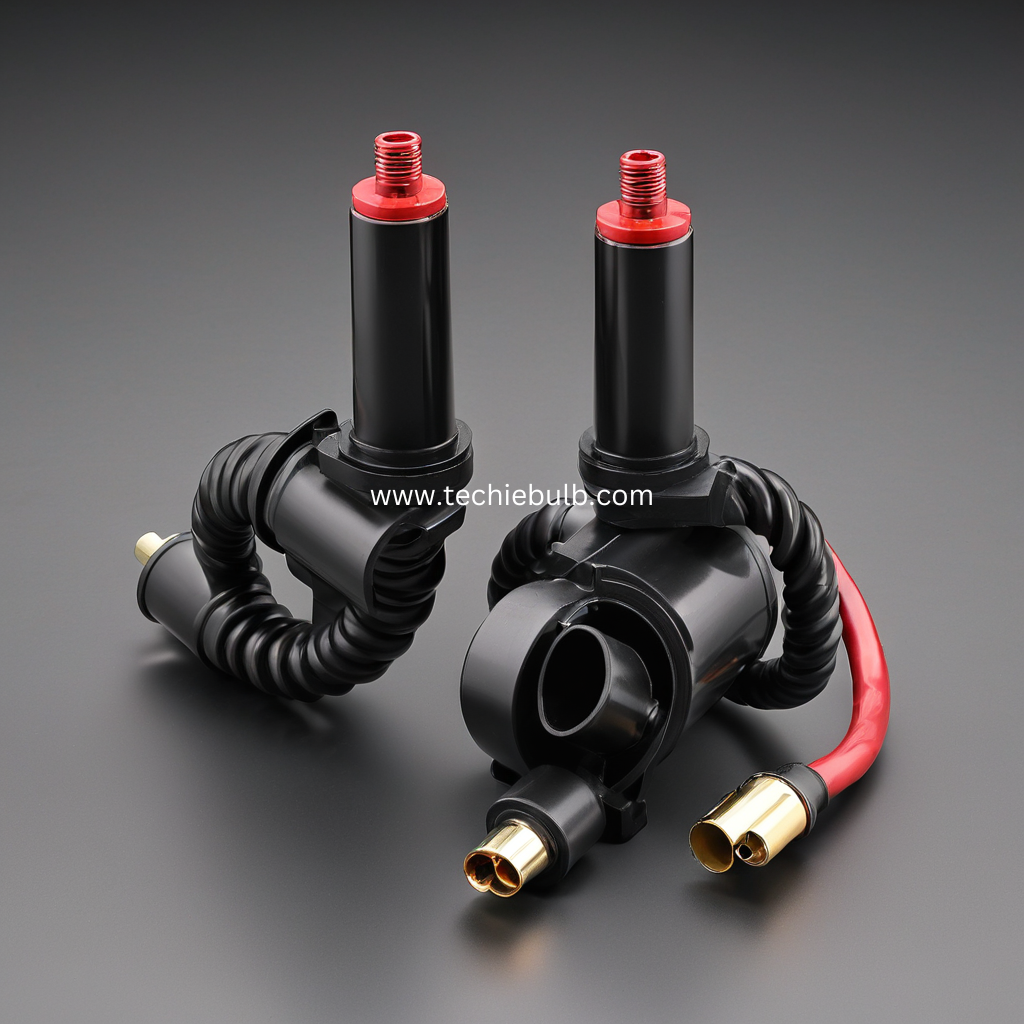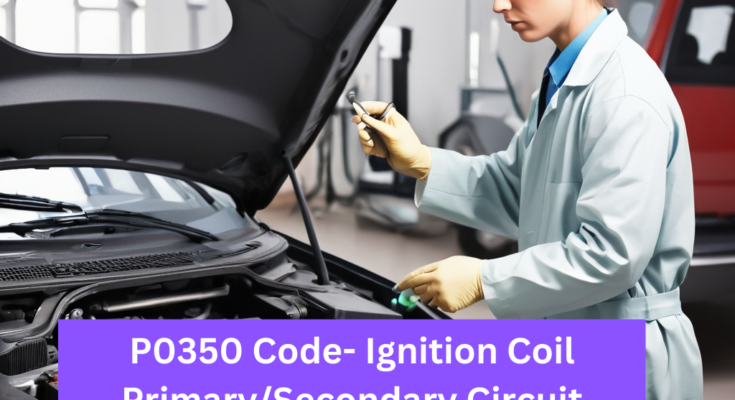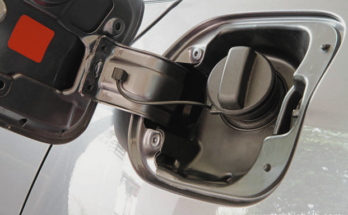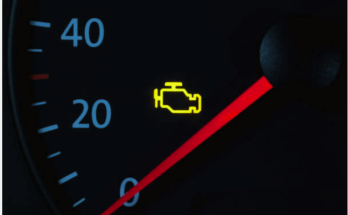The P0350 code specifically relates to a malfunction in the primary or secondary ignition coil circuits. Ignition coils play a crucial role in the engine’s ignition system, converting low-voltage power from the battery into high-voltage power needed to ignite the air-fuel mixture in the combustion chambers. When a fault is detected in one or more ignition coil circuits, the vehicle’s onboard system triggers the P0350 code, alerting you to a potential issue that requires attention.
- Common causes of a P0350 code include a faulty ignition coil, worn-out spark plugs, and issues within the circuitry.
- Symptoms often associated with this trouble code include engine misfiring, decreased engine performance, and reduced fuel economy.
Introduction to Ignition System:- The ignition system in a vehicle is responsible for starting the engine and keeping it running smoothly. It’s a network of components that work together to create sparks that ignite the fuel-air mixture in the engine’s cylinders. Without a properly functioning ignition system, your vehicle would simply refuse to start or run efficiently.
What does the P0350 Code mean?
The P0350 code is a diagnostic trouble code (DTC) that indicates a malfunction within the ignition coil’s primary or secondary circuit. When the engine control module (ECM) detects irregularities in this circuit, it triggers the P0350 code and illuminates the check engine light on the vehicle’s dashboard.
This code is particularly significant as it pertains to the ignition system, a critical component responsible for initiating combustion in the engine’s cylinders. A malfunction in the ignition coil circuit can lead to various symptoms, including engine misfires, rough idling, decreased fuel efficiency, and even stalling.
See Also:-P0349 Code OBD-2: Camshaft Position Sensor “A” Circuit Intermittent Bank 2
Understanding the Ignition Coil Circuit
Primary Circuit
- Primary Power Supply-The ignition coil’s primary circuit serves as the gateway for electrical power, channeling energy from the battery and ignition switch. This circuit comprises the primary winding of the ignition coil, igniting the spark that propels our engines to life.
- Magnetic Marvels-As electrical current surges through the primary winding, it induces a magnetic field within the ignition coil. This magnetic marvel sets the stage for the ignition process, laying the groundwork for the secondary circuit’s electrifying performance.
Secondary Circuit
- Voltage Amplification-In the realm of the secondary circuit, voltage reigns supreme. Here, the ignition coil’s secondary winding transforms the modest voltage from the primary circuit into a potent spark capable of igniting the air-fuel mixture within our engine’s combustion chambers.
- Spark Generation-With voltage amplified to staggering levels, the secondary circuit fulfills its destiny, generating a spark that dances across the spark plugs with unparalleled precision. This symphony of electricity heralds the commencement of combustion, propelling our vehicles forward with each exhilarating revolution.
Modern Coil-on-plug ignition coils, also known as direct ignition coils or coil-on-coil ignition systems, are a type of ignition system commonly used in modern vehicles. In this setup, each spark plug has its own individual ignition coil, which is mounted directly on top of the spark plug. This design eliminates the need for spark plug wires and distributor caps, resulting in a more compact and efficient ignition system.

The primary function of coil-on-plug ignition coils is to generate the high-voltage electrical pulse needed to create a spark at the spark plug’s electrode. This spark ignites the air-fuel mixture in the combustion chamber, powering the engine. By having a separate ignition coil for each spark plug, coil-on-plug systems can deliver precise ignition timing and better control over engine performance.
One of the main advantages of coil-on-plug ignition coils is improved reliability and durability. Because each spark plug has its own dedicated coil, there is less chance of ignition system failure due to worn-out spark plug wires or distributor components.
See Also:-P0348 Code OBD-II: Camshaft Position Sensor “A” Circuit High Bank 2
What are the Common Causes of the P0350 Code?
The P0350 code can stem from various underlying issues related to the ignition system. Some common causes include
- a faulty ignition coil,
- worn-out or fouled spark plugs,
- issues with the wiring or connectors in the ignition coil circuit,
- and problems with the engine control module (ECM) or powertrain control module (PCM).
Corrosion or damage to the ignition coil connector, as well as issues with the ignition coil driver circuit, can also trigger the P0350 code. Identifying the exact cause typically requires thorough diagnostic testing to pinpoint the specific component or system malfunction.
See Also:-P0347 Code OBD-II: Camshaft Position Sensor A Circuit Low Input (Bank 2)
How to Diagnose and Fix the P0350 Code?
Diagnosing and fixing the P0350 code involves a systematic approach to identify the underlying issue accurately. Start by checking the check engine light using an OBD-II scanner to retrieve the specific trouble code (P0350) and any accompanying codes, noting the freeze frame data.
Inspect the ignition coil for physical damage and ensure it’s securely connected to the spark plug and wiring harness. Test the resistance of the ignition coil with a multimeter and inspect the spark plugs for wear or damage, replacing any faulty ones.
Check the wiring and connectors in the ignition coil circuit for damage, corrosion, or loose connections, and repair or replace them as needed. Test the continuity and voltage of the ignition coil circuit to ensure proper functioning. If all components check out fine, perform a diagnostic scan to check for additional trouble codes and address any issues with the ECM or PCM.
Finally, clear the codes from the ECM or PCM memory and take the vehicle for a test drive to ensure the issue is resolved. If unsure, seek assistance from a qualified mechanic for accurate diagnosis and repair.
See Also:-P0345 Code OBD-II: Camshaft Position Sensor “A” Circuit (Bank 2)
What is the Cost of Diagnosing the P0350 Code?
The cost of diagnosing the P0350 code can vary depending on several factors, including the location of the vehicle, the diagnostic equipment used, and the labor rates of the mechanic or repair shop.
In general, the cost typically ranges from $50 to $150 for the diagnostic scan alone. However, if additional testing or inspection is required to pinpoint the exact cause of the code, such as testing the ignition coil or inspecting wiring connections, the total cost may increase.
Additionally, the cost of repairs or parts replacement to fix the underlying issue causing the P0350 code will vary depending on the specific components involved and whether any additional parts or labor are needed. It’s essential to consult with a qualified mechanic or repair shop to get an accurate estimate of the total cost of diagnosing and fixing the P0350 code for your vehicle.
See Also:-P0344 Code OBD-II: Camshaft Position Sensor “A” Circuit Intermittent (Bank 1 or Single Sensor)
Understanding Problems in Fixing the P0350 Code
Fixing the P0350 code can sometimes present challenges due to the variety of potential causes and the complexity of the ignition system. One common issue is accurately identifying the specific component or system malfunction responsible for triggering the code.
The ignition system consists of multiple components, including the ignition coil, spark plugs, wiring, connectors, and the engine control module (ECM) or powertrain control module (PCM). Determining which component is faulty often requires thorough diagnostic testing, which can be time-consuming and may require specialized equipment.
Another challenge in fixing the P0350 code is accessing and servicing the components involved, particularly if they are located in hard-to-reach areas of the engine compartment. In some cases, removing other engine components or parts may be necessary to gain access to the ignition coil or related components, adding to the complexity of the repair process.
Resolving the P0350 code may require replacing parts such as the ignition coil or spark plugs, which can add to the overall cost of the repair. Furthermore, if the issue is related to wiring or connectors, locating and repairing the damaged or corroded wires can be labor-intensive.
Overall, fixing the P0350 code may require patience, diagnostic expertise, and possibly some trial and error to identify and address the underlying issue accurately. Consulting with a qualified mechanic or repair shop is advisable to ensure proper diagnosis and repair of the problem.
See Also:-Diagnostic Trouble Code P0343:High Input Signal Detected in the Camshaft Position Sensor Circuit
Conclusion
The P0350 code signals potential problems with the ignition coil’s primary or secondary circuit. Understanding the symptoms and diagnostic process is essential for effectively diagnosing and resolving ignition coil issues. By addressing the underlying cause of the P0350 code, vehicle owners can ensure optimal engine performance and reliability.




